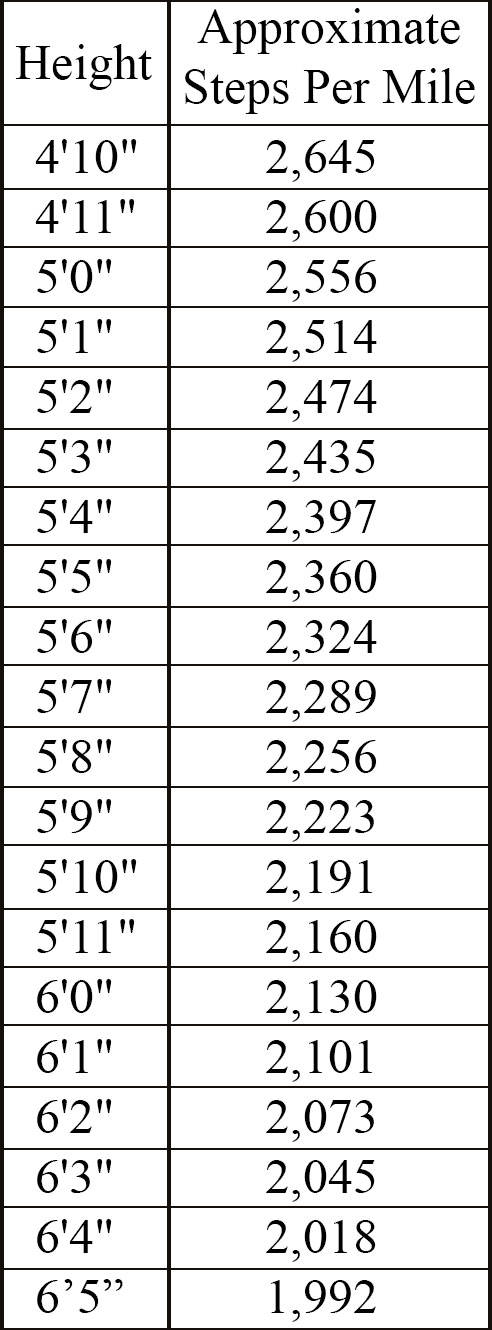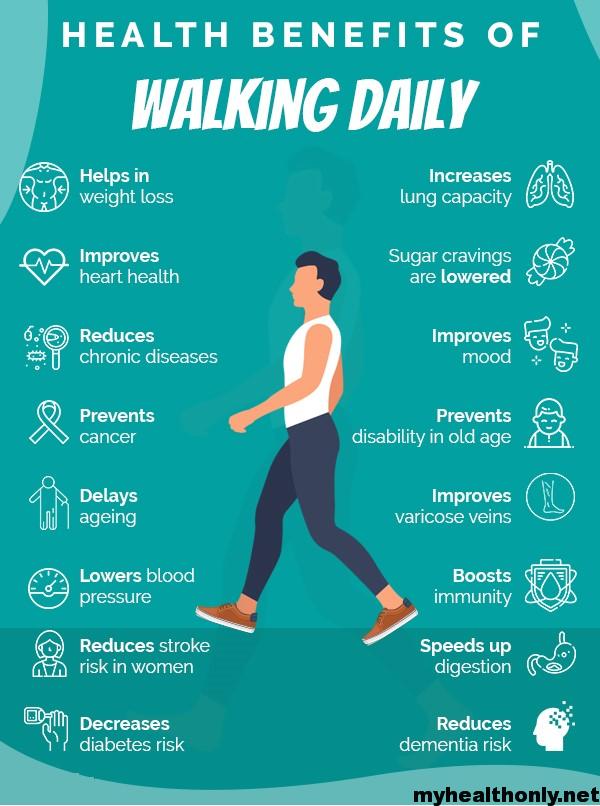The Significance of Measuring Steps per Mile
Understanding how many steps are in a mile can be incredibly beneficial for individuals who enjoy walking as a form of exercise or transportation. By measuring the number of steps taken per mile, individuals can set realistic fitness goals, track their progress over time, and stay motivated to continue walking and improving their health. For example, setting a goal to increase the number of steps per mile by a certain percentage each week can provide a clear and measurable objective for walkers to strive towards. Tracking progress towards this goal can also help individuals see the tangible results of their efforts, which can be incredibly motivating and rewarding.
Moreover, measuring steps per mile can help individuals ensure that they are getting enough physical activity to meet recommended guidelines for exercise and health. According to the American Heart Association, adults should aim for at least 150 minutes of moderate-intensity aerobic activity or 75 minutes of vigorous-intensity aerobic activity per week, in addition to muscle-strengthening activities on two or more days a week. By measuring steps per mile, individuals can ensure that they are getting enough aerobic activity to meet these guidelines and improve their overall health and well-being.
In short, measuring steps per mile is a simple yet powerful tool for individuals who want to take control of their fitness and health. By providing a clear and measurable way to track progress and set goals, this metric can help walkers stay motivated, engaged, and on track towards their health and fitness objectives.
The Average Number of Steps per Mile: A Closer Look
The average number of steps it takes to walk a mile can vary depending on a number of factors, including walking speed, age, and fitness level. According to a study published in the Journal of Physical Activity and Health, the average number of steps per mile for adults is approximately 2,000 steps. However, this number can range from around 1,500 to 2,500 steps depending on individual factors. For example, individuals who walk at a faster pace may take fewer steps per mile than those who walk more slowly. Similarly, older adults or those with mobility limitations may take more steps per mile than younger, more able-bodied individuals. Fitness level can also play a role, with more fit individuals tending to take fewer steps per mile due to their longer stride length.
It’s important to note that the average number of steps per mile is just a rough estimate, and individual results may vary. To get a more accurate measure of your own steps per mile, it’s best to follow the step-by-step instructions provided in the next section.
Despite the variability in the average number of steps per mile, measuring this metric can still be a valuable tool for individuals who want to track their fitness and health. By setting goals and tracking progress over time, walkers can stay motivated and engaged in their exercise routine, and may even see improvements in their cardiovascular fitness, muscle strength, and overall well-being.
How to Measure Your Own Steps per Mile
Measuring your own steps per mile is a simple process that can be done with just a few tools and some basic math. Here’s how to do it:
Find a flat, straight path that is at least a quarter of a mile long. Ideally, this path should be marked with distance markers, such as a track or a trail with mile markers.
Warm up with some light stretching or walking to prepare your body for exercise.
Start walking at a comfortable pace, and make sure to keep your posture upright and your arms swinging naturally at your sides.
Count the number of steps you take as you walk a specific distance. For example, you might count the number of steps it takes to walk from one mile marker to the next.
Once you have reached the end of your chosen distance, divide the total number of steps you took by the distance you traveled. For example, if you took 800 steps to walk a quarter of a mile, you would divide 800 by 0.25 to get 3,200 steps per mile.
To ensure accuracy and consistency in your measurements, it’s important to use the same path and walking speed each time you measure your steps per mile. You may also want to repeat the measurement several times to get an average result.
It’s worth noting that factors such as walking speed, stride length, and fitness level can all affect the number of steps it takes to walk a mile. As a result, your steps per mile may vary slightly from day to day or from one measurement to the next. However, by following the steps outlined above, you can get a reasonably accurate estimate of your own steps per mile that can be used to set and track fitness goals.
Using Pedometers and Fitness Trackers to Measure Steps per Mile
Pedometers and fitness trackers are popular tools for measuring steps per mile, and can be a convenient and accurate way to track your walking distance. Here’s how they work: A pedometer is a small device that clips onto your clothing or fits in your pocket. It uses a spring-loaded mechanism to count each step you take, and can be calibrated to estimate the distance you’ve traveled based on your stride length.
Fitness trackers, on the other hand, are more advanced devices that can track a variety of fitness metrics, including steps, distance, heart rate, and calories burned. Many fitness trackers use accelerometers and other sensors to detect movement and estimate distance traveled, while some also include GPS technology for more accurate tracking.
When choosing a pedometer or fitness tracker, there are a few factors to consider. First, consider the accuracy of the device. Look for a pedometer or fitness tracker that has been tested for accuracy and has good reviews from other users.
Next, consider the features you want. Do you want a basic pedometer that simply counts steps, or do you want a more advanced fitness tracker that can track a variety of metrics? Do you want a device that syncs with your smartphone or computer, or do you prefer a standalone device?
Some popular pedometers and fitness trackers for measuring steps per mile include the Fitbit Charge 4, the Garmin Vivosmart 4, and the Apple Watch. These devices offer a range of features and price points, so you can choose the one that best fits your needs and budget.
When using a pedometer or fitness tracker to measure steps per mile, it’s important to ensure that the device is properly calibrated to your stride length. This can usually be done by inputting your height and other information into the device’s settings.
It’s also important to wear the device correctly, following the manufacturer’s instructions for placement and use. This will help ensure that the device is accurately tracking your steps and distance.
Overall, pedometers and fitness trackers can be a valuable tool for measuring steps per mile and tracking your walking distance. By choosing a device that is accurate, reliable, and tailored to your needs, you can use this technology to set and achieve fitness goals, track your progress, and stay motivated on your walking journey.
Incorporating Steps per Mile into Your Fitness Goals
Knowing your own steps per mile can be a valuable tool for setting and achieving fitness goals. By tracking your steps and distance over time, you can see how far you’ve come, identify areas for improvement, and stay motivated to keep moving. One specific fitness goal that you can achieve by incorporating steps per mile is increasing your steps per mile over time. This can help you improve your cardiovascular fitness, burn more calories, and build endurance. To do this, start by measuring your current steps per mile using the instructions provided in the “How to Measure Your Own Steps per Mile” section. Then, set a specific goal for increasing your steps per mile, such as by 10% over the next month.
Create a plan for achieving your goal, including a schedule for walking and tracking your progress. You might aim to walk a certain number of miles per week, or set a daily step goal using a pedometer or fitness tracker. Monitor your progress regularly, and adjust your plan as needed to stay on track.
Another fitness goal that you can achieve by incorporating steps per mile is walking a certain number of miles per week. This can help you stay consistent with your exercise routine and make progress towards your overall fitness goals. To do this, calculate how many miles you need to walk per week to meet your goal, and then divide that number by your steps per mile to determine how many steps you need to take each week.
For example, if your goal is to walk 10 miles per week and your steps per mile is 2,000, then you would need to take 50,000 steps per week (10 miles x 5,000 steps per mile). Break this number down into daily or weekly goals, and track your progress using a pedometer or fitness tracker.
By incorporating steps per mile into your fitness goals, you can take control of your exercise routine and make meaningful progress towards your overall health and wellness objectives.
Troubleshooting Common Issues with Measuring Steps per Mile
Measuring steps per mile can be a valuable tool for tracking fitness progress and setting goals, but there are some common issues that can arise during the measurement process. Here are some troubleshooting tips and strategies for overcoming these challenges:
Inconsistent Stride Length
Stride length can vary from person to person, and even from one walking session to the next. To ensure accuracy in measuring steps per mile, it’s important to use a consistent stride length. One way to do this is to measure your stride length while walking at a comfortable pace, and then use this measurement to calculate your steps per mile. If you’re using a pedometer or fitness tracker, make sure to calibrate the device to your specific stride length. Many devices allow you to do this by inputting your height and weight, or by manually setting the stride length.
If you’re measuring steps per mile manually, try to use a consistent stride length by focusing on maintaining a steady pace and avoiding any sudden movements or distractions. It can also be helpful to use a metronome or music with a consistent beat to help regulate your pace.
Difficulty Maintaining a Consistent Walking Speed
Walking speed can also affect the number of steps per mile. To ensure accuracy in your measurements, try to maintain a consistent walking speed throughout the measurement process. If you’re using a pedometer or fitness tracker, look for a device that includes a pace tracker or speed monitor. This can help you maintain a consistent walking speed and ensure accuracy in your steps per mile measurements.
If you’re measuring steps per mile manually, try using a timer or stopwatch to keep track of your time and pace. This can help you maintain a consistent walking speed and ensure that you’re measuring steps accurately.
Other Factors That Can Affect Steps per Mile
There are other factors that can affect steps per mile, including terrain, footwear, and individual differences in walking style. To ensure accuracy in your measurements, try to control for these factors as much as possible. For example, try to measure steps per mile on a flat, even surface to avoid any variations in terrain. Wear comfortable, supportive shoes that are designed for walking. And be aware of any individual differences in your walking style, such as a tendency to shuffle your feet or take longer strides.
Conclusion
Measuring steps per mile can be a valuable tool for tracking fitness progress and setting goals, but it’s important to be aware of common issues that can arise during the measurement process. By using a consistent stride length, maintaining a consistent walking speed, and controlling for other factors that can affect steps per mile, you can ensure accuracy in your measurements and make meaningful progress towards your fitness goals.
The Benefits of Walking for Exercise and Health
Walking is a simple, accessible, and low-impact form of exercise that offers numerous benefits for physical and mental health. By measuring your steps per mile, you can maximize these benefits and set achievable fitness goals. Here are some of the key benefits of walking for exercise and health:
Improved Cardiovascular Fitness
Walking is a great way to improve cardiovascular fitness, which is essential for overall health and well-being. By increasing your heart rate and breathing rate, walking helps to strengthen the heart, reduce blood pressure, and improve circulation. Measuring your steps per mile can help you track your progress and ensure that you’re getting enough cardiovascular exercise. Aim for at least 10,000 steps per day, or a total of 30 minutes of moderate-intensity exercise, to see improvements in cardiovascular fitness over time.
Reduced Risk of Chronic Diseases
Regular walking has been shown to reduce the risk of chronic diseases such as heart disease, diabetes, and stroke. By improving insulin sensitivity, reducing inflammation, and promoting weight loss, walking can help to lower blood sugar levels, reduce blood pressure, and improve cholesterol levels. Measuring your steps per mile can help you ensure that you’re getting enough exercise to reduce your risk of chronic diseases. Aim for at least 150 minutes of moderate-intensity exercise per week, or a total of 7,500 steps per day, to see health benefits over time.
Increased Mental Well-Being
Walking is not only good for physical health, but also for mental well-being. By reducing stress, improving mood, and boosting creativity, walking can help to improve overall quality of life. Measuring your steps per mile can help you make walking a regular part of your routine, and ensure that you’re getting enough exercise to see mental health benefits. Aim for at least 30 minutes of moderate-intensity exercise per day, or a total of 5,000 steps per day, to see improvements in mental well-being over time.
Conclusion
Measuring your steps per mile can help you set and achieve fitness goals, track progress, and maximize the benefits of walking for exercise and health. By incorporating walking into your daily routine, you can improve cardiovascular fitness, reduce the risk of chronic diseases, and increase mental well-being. To learn more about steps per mile and how to measure them, check out the resources provided in the “Additional Resources for Learning More About Steps per Mile” section.
Additional Resources for Learning More About Steps per Mile
If you’re interested in learning more about steps per mile and how to measure them, there are many resources available to help you. Here are some of our top recommendations:
Books
- “Pedometer Walking: Stepping Your Way to Health, Weight Loss, and Fitness” by Mark Fenton
- “The Step Diet: Lose Weight the Natural Way–Without Hunger or Exercise!” by James O. Hill and Bonnie T. Jortberg
- “The 10,000 Steps a Day Fitness Program” by Wendy Bazilian
Websites
Online Forums
By exploring these resources, you can deepen your understanding of steps per mile and how to measure them, and connect with a community of walkers who share your interests and goals. Remember, the more you learn about walking and fitness, the better equipped you’ll be to set and achieve your health and wellness goals.







